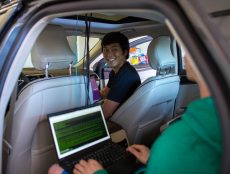
In the past, information came from limited sources. If you wanted to learn about a topic or develop a new skill, you needed to either find a book or other written source of information, or else you had to find someone who already had the information you wanted and was willing to teach you.
Those days are long gone. In the 21st century, information comes from an amalgam of digital sources: we have the means to store, access, organize, and analyze information like never before.
It’s no surprise, then, that the radical changes in our access to information has affected the way we learn, and the way we teach.
The New Psychology of eLearning and Instructional Design
In the simplest of terms, instructional design is the development of a systematic approach to identifying the information that a learner needs to know, and analyzing the most effective strategies for teaching that information. Technology and eLearning have driven profound changes in instructional design, and permanently altered some of our oldest ideas about how to convey information in an educational setting.
Applied psychologist Richard Mayer has devoted his studies to the intersection of technology and cognition. With fellow researchers from the University of California Santa Barbara, Dr. Mayer has provided remarkable insight into how multimedia technology has the potential to change the face of instructional design.
“The unifying goal is to conduct methodologically rigorous studies that yield research-based principles of instructional design and contribute to cognitive science theories of how people learn,” Mayer explained in a recent article by UC Santa Barbara’s online publication The Current.
For Mayer, this work has led him to explore a variety of innovative possibilities for instructional design in eLearning: how students can gain problem solving skills through interactive simulation; how scientific principles can be explained through computer-based video, animation, and narration; and how mobile devices, virtual reality, and intelligent tutoring systems could combine to create exciting new ways to individualize learning.
The End of the “Sage on the Stage”
 Mayer’s work is representative of the trends of modern instructional design. For a very long time, education of any kind — whether K-12, in a university setting, or continuing specialized education for professionals — was based primarily on the “sage on the stage” model: an expert on a particular subject stands at the front of the room and talks while students listen and soak up as much information as they can.
Mayer’s work is representative of the trends of modern instructional design. For a very long time, education of any kind — whether K-12, in a university setting, or continuing specialized education for professionals — was based primarily on the “sage on the stage” model: an expert on a particular subject stands at the front of the room and talks while students listen and soak up as much information as they can.
Of course, this model has severe limitations. It often fails to fully engage learners, especially those who tend toward kinesthetic and visual learning types, and it relies almost entirely on explanations of theoretical models rather than hands-on simulation and practice.
With a group of students listening to a single lecturer, there’s very little room to cater to students anywhere outside the middle of the bell curve. Students who would benefit from advanced coursework quickly lose interest, and students who would benefit from additional instruction quickly lose motivation.
Changing Roles for Educators
The widespread accessibility of technology, and in particular the advent of eLearning, have given rise to a new model: the “guide on the side.” In this revamped version of instructional design, students are actively engaged participants in their own education, with the teacher there as a resource to help learners forge their own path to new skills and academic growth.
Mayer and other leading experts believe the instructional design of this century will build on exciting new possibilities for the development and implementation of the “guide on the side.” With devices like laptops and tablets in the hands of so many students, learners will no longer be required to work and learn at the same pace as their neighbors.
Computer-supported learning systems like the ones that Mayer is researching will provide new ways for students to interact and engage with information. Classwork need no longer rely on repetitive activities like fill-in-the-blank workbooks. Already, thousands of educational apps, computer programs, websites, and tools are at the disposal of educators.
As instructional design catches up with technological development, instructors will find more and more ways to foster an independent and personalized path toward learning for students of all ages and abilities.









One Comment